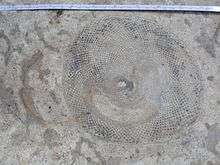Tyndall stone


Tyndall stone is a dolomitic limestone quarried from the Selkirk member of the Ordovician Red River Formation, in the vicinity of Garson, Manitoba, Canada. It was first used in 1832 for building Lower Fort Garry, and has since become popular for building purposes throughout Canada and the United States. The Canadian Parliament Buildings in Ottawa, the Saskatchewan Legislative Building in Regina, Federal Building, Edmonton, the Canadian Museum of Civilization in Hull, the Manitoba Legislative Building in Winnipeg, and the Empress Hotel in Victoria and les Apartements Le Chateau in Montreal all have Tyndall stone in their construction.
The rock is famous for its cream colour (limestone) with its pervasive coloured mottling (dolomite), caused by the burrowing of marine creatures when the limestone was deposited. It also contains numerous gastropod, brachiopod, cephalopod, trilobite, coral, and stromatoporoid fossils.
The quarry is operated by Gillis Quarries Ltd., and is located approximately 40 kilometres northeast of Winnipeg.
Cultural reference
Author Carol Shields described Tyndall stone in her Pulitzer Prize winning novel, The Stone Diaries.
External links
| Look up tyndall stone in Wiktionary, the free dictionary. |
- Tyndall Stone at Manitoba Industry, Economic, Development and Mines
- Tyndall Stone at Geological Survey of Canada
- Gillis Quarries, operator of Tyndall Stone quarry
- Manitoba's Tyndall Stone by Mario Coniglio
- GeoCache of Tyndall Stone building with fossil descriptions